Al Baleed Archaeological Park (also Al Balid Archeological Site) is an open air historical park in Salalah, Oman. It is a UNESCO World Heritage site and famous for the frankincense trade port in the past.
Contents
The Remains of the City of Zafar
Zafar, the earlier city of the modern time city of Salalah, is from where the current name of the province of Dhofar got its name. The city dates back to pre-Islamic period, somewhere 4000 years ago along the Arabian Sea. It is an important human settlement since 2000 BC and appeared to be an active city during the late bronze age.
The ancient city got popularity, especially from 8th to 16th century, due to its geographical location. From this port city, Frankincense was shipped to Africa, India and China. Frankincense grew further inland in Wadi Dawkah.
Unfortunately, little is known about the port’s demise.
A City Visited by Renowned Travelers
The renowned Italian Explorer Marco Polo, and famous Moroccan Traveler Ibn Battuta visited Zafar and were impressed. When visited the city in 13th Century, Marco Polo described it as a magnificent and beautiful city. Also he mentioned the city as one of the biggest harbors of the Indian Ocean. In his travelogue, Ibn Battuta wrote good words about the city.
Also, other famous travelers visited the city, like Ibn Al Mujawer, H. G. Carter, Miles, Bents, Polly, Bertram Thomas, and Zheng He.
A UNESCO World Heritage Site
Al Balid Archaeological Park is a UNESCO World Heritage site, as one of the 4 components of Land of Frankincense. The ruins are across the Arabian Sea.
The excavation work started in 1952. Further excavation was carried out in 1977. As a result of these excavations, the historians found jars, bowls, pottery fragments, oil lamps, bowls, decorative tile, copper coins, women’s ornaments and other similar objects.
Tourist Attractions Near Al Balid Archeological Site
Since it is in the city, the archeological park is adjacent to other popular tourist attractions. Some of these attractions are as follows:
Opening Timing of Al Baleed Site
The site opens twice daily, with a small day break in the middle. Firstly, opening hours are from 8 am to 2 pm. Secondly, from 4 pm to 8 pm. This is valid for all days of the week except on the weekend.
On Friday, archeological park opens at 4 pm and closes at 8 pm.
Entrance Fees
A nominal entrance fees applies. It includes entrance to the open air archaeological site, as well as the on-site indoor museum.
Interestingly, the entrance charges are based on the type of vehicle like saloon car, 4WD, van, coaster, or bus. Saloon and 4WD entrance is 2 Rials Oman, while that for van is 20 Rials Omani. The entrance ticket for coaster and coach is 50 and 100 Omani Rials respectively.
Most Important Things to See in Al Baleed Archeological Site
The six most important things to see in this UNESCO site are:
- Remains of Grand Mosque at Al Baleed
- Ruins of Al Baleed Fort
- Ruins of the City wall
- The Lagoon at the Park
- The Museum of the Frankincense Land
- Bird Watching
1. Remains of the Grand Mosque at Al Baleed
Grand Mosque at Al Balid is also known as Al Baleed Mosque. This mosque is on the Western side of the archeological site. The remains of the mosque are impressive. The Grand Mosque is an excellent example of the elegant local architecture.
Total covered area of Mosque is over 1,700 square meters. As per Islamic calendar, it dates back to the 4th Century AH (338 Hijri). This period is equivalent to 10th century (950 CE).
The main prayer hall was the largest area in the mosque. Its roof features 144 columns, many of them are still visible at the site. The columns are distributed in 13 rows.
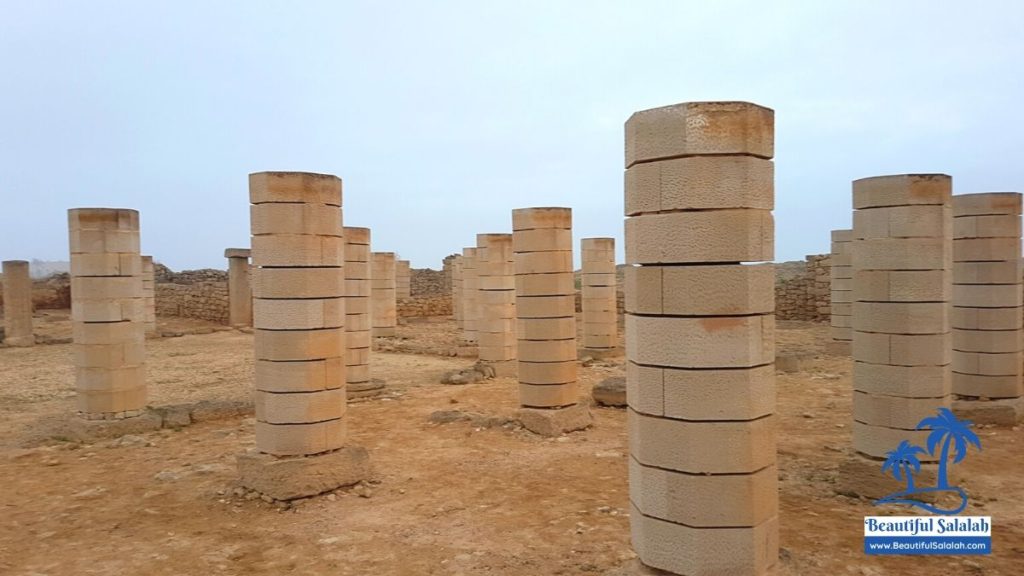
2. Ruins of Al Baleed Fort – The Palace
Just a few meters away from the mosque, the remarkable ruins of the ruling Sultan’s Palace, are located. The remains are the largest heap of masonry in the archeological park.
The palace is at the extreme end of the site, on the western side.
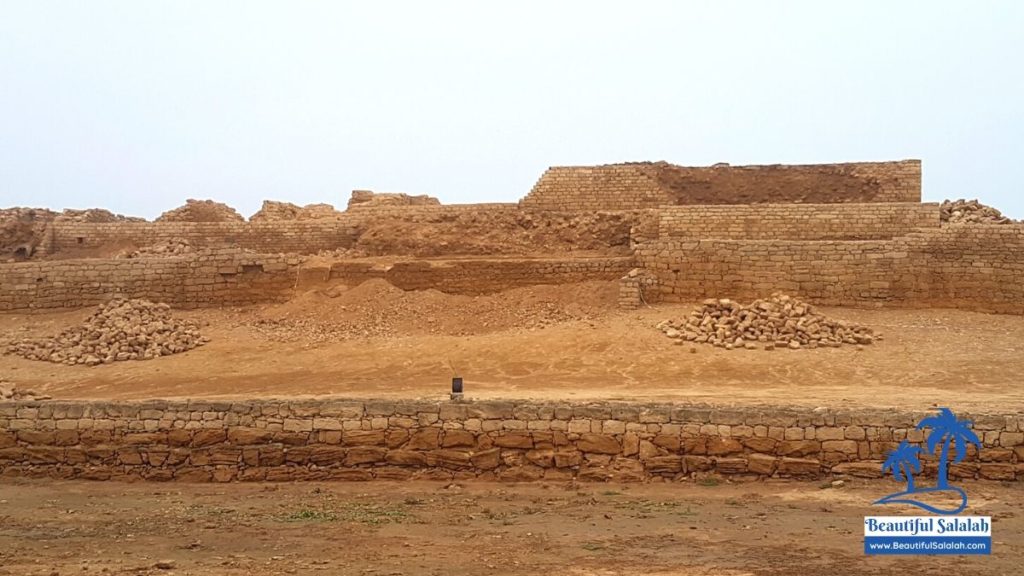
3. Ruins of the City Wall
This ancient city wall was constructed in North and West side of the fort. The main application of this wall was protection from the seasonal rains that flooded the mountains of Dhofar. City wall is sometimes referred as Al Madinah Wall.
4. The Lagoon at the Park
The lagoon at the park is pretty. This divides the car park to the actual ruins site. A small bridge connects the two separated parts.
Besides making the place beautiful, the lagoon is popular for birds watching. Also, one can have a boat ride in the evening.
The view of the lagoon is spectacular from the ruins’ side- mainly as the background will have the coconut farms.
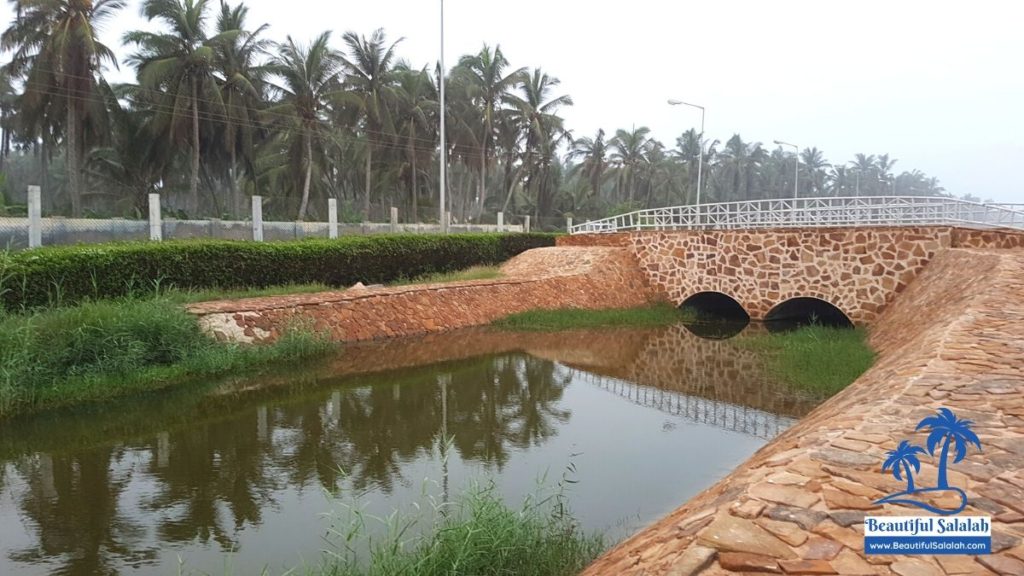
5. Museum of the Frankincense Land
On the Eastern side of the site, an on-site museum “The Museum of the Frankincense Land” is located. This is the only museum in Salalah.
The museum hosts the following:
- Artifacts excavated from Al Baleed, Sumhuram and Ash Shisr, which are other UNESCO sites in the region. Sumhuram is located East of Al Baleed and Ash Shisr is located on edge of Rub Al Khali desert.
- Historical and archaeological heritage of the Governorate of Dhofar.
- Superb models of Omani boats from 3000 BC to current.
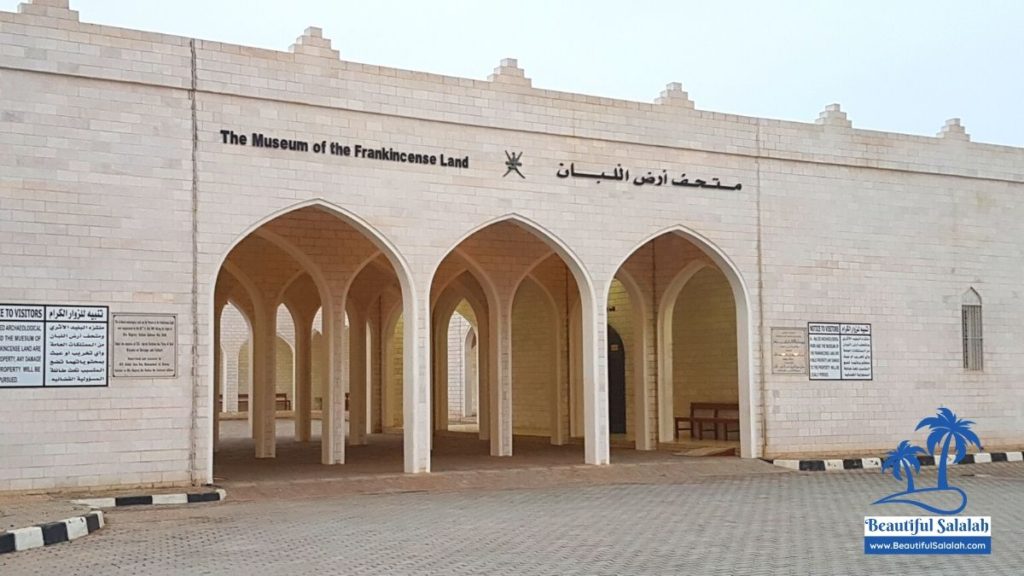
Moreover, you can find other things and informative material inside the museum. Further Reading: Museum of the Frankincense Land
6. Birds Watching
For the purpose of bird watching, an observation tower is present at the Eastern end of the park. Access for this tower is from the entrance of Al Baleed Restaurant. This watch tower overlooks the main lagoon and has a very nice view.
Informative Sign Boards
Al Baleed Archeological site has helpful signboards throughout the park. These signboards mention historical and archeological details in both English and Arabic. Moreover, these boards contain visuals, usually placed in between Arabic and English description.
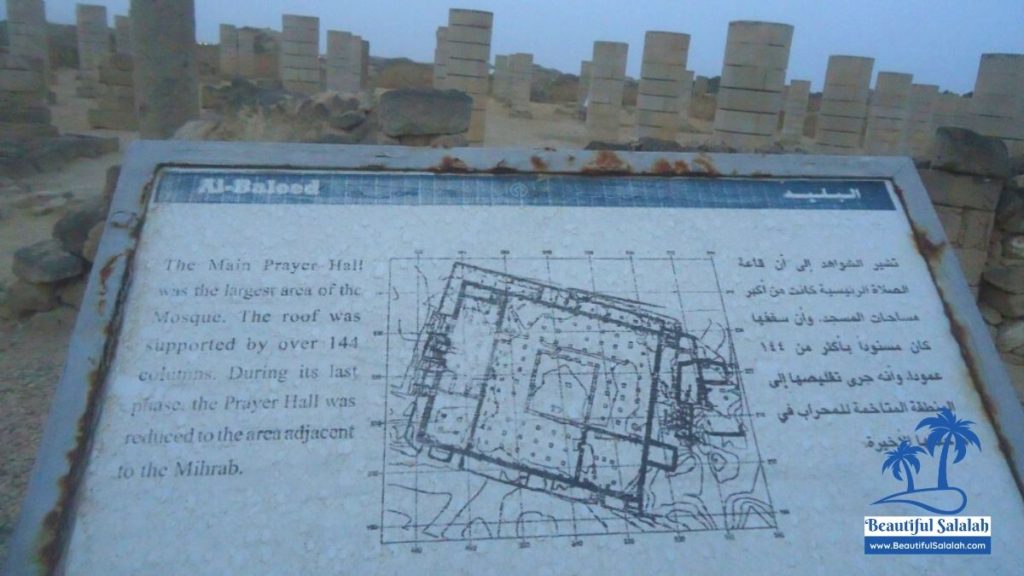
Explore by Walking or in Golf Cart
To cover entire Archaeological Park quickly, one can hire a golf cart. The cart will stop at various places for detailed viewing. It costs 500 baiza per person. This is equivalent to half Omani Rial.
The eight-seated battery operated open cars are perfect for tourists, especially with families and kids. to give them a round of the park. The ride on the cart takes around 20 minutes.
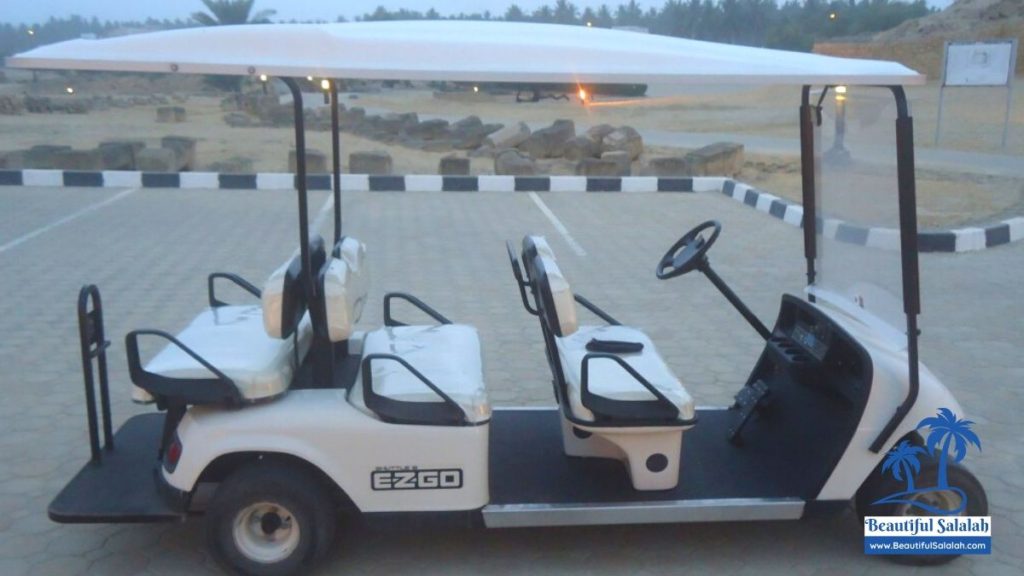
Alternatively, you can cover Al Baleed Archaeological Park on foot. Although this will take more time, it will give you freedom to stop at any place as long as you want. For the purpose of easy and comfortable walk, the site has a 2.2 kilometre long access path built over archaeological surface.
Illumination at Night
Al Baleed Archaeological Park is closed at night. Still it is beautifully lit with warm color light. This makes the ruins, especially that of the palace, visible to the passerby along the Sultan Qaboos Street, from outside the fence.
Stay Near Al Baleed Archaeological Park
1. Al Baleed Resort Salalah by Anantara
Al Baleed Resort Salalah by Anantara offers Villas with Private Pool. This resort at walking distance from the archeological site. Occupying a beachfront location, Al Baleed Resort is is the first luxury villa resort in Salalah.
Check best rates online at Al Baleed Resort Salalah by Anantara
2. Crowne Plaza Resort Salalah
A waterfront resort, Crowne Plaza Resort is one of the best places to stay in Salalah. Lush tropical garden surrounds the hotel building. Crowne Plaza has 153 rooms.
Check best rates online at Crowne Plaza Resort Salalah
